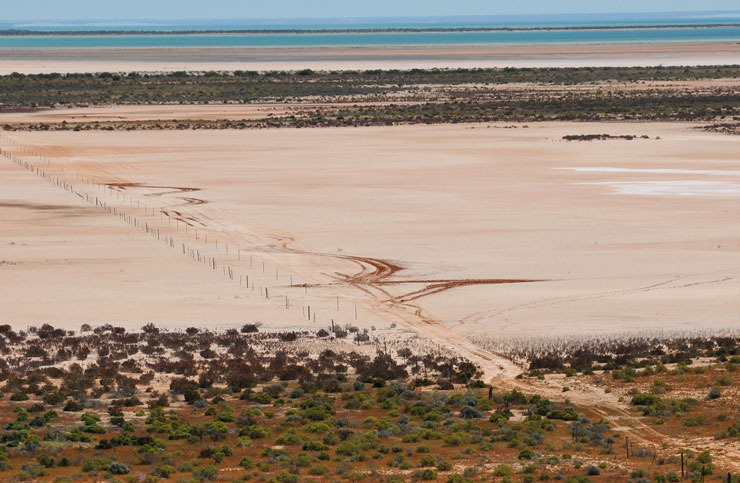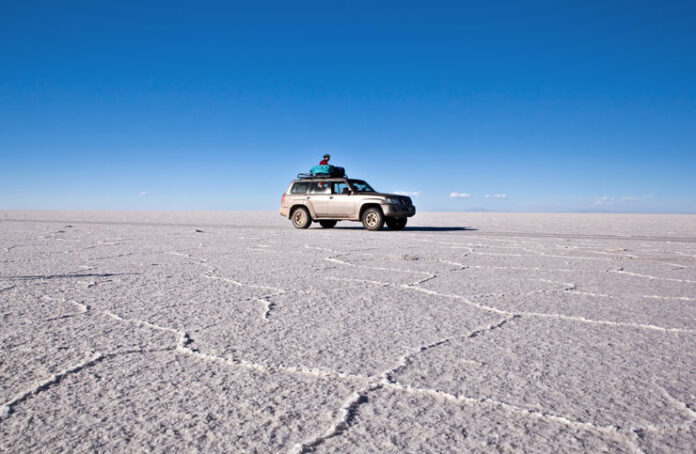Don't be fooled by the hard crusty appearance of the salt pans when you are about to cross.
There will be on most times, some well compacted tracks leading across the salt pan to the other side.
Sticking to them will usually see you succeed in the crossing with no drama but, be warned, if you are feeling adventurous and choose to make your own tracks, that crusty surface will possibly crack leaving you wallowing in the muddy ooze under surface.
If you are alone, you could become stranded until help arrives.

It's easy to see in the photo above where vehicles have detoured off the track, broken through the surface crust and had to work hard to get back on track.
If you have any doubts about the integrity of the surface of the salt pan, you can reduce your chances of getting bogged by lowering your tyre pressures the same as if you were approaching soft sand.
Around 16psi is a good pressure - low enough to significantly increase the contact area of your tyres and therefore spread the load.
But not so low that you risk popping a tyre off the bead.
Just remember that the lower your tyre pressures - the lower your speed needs to be.


